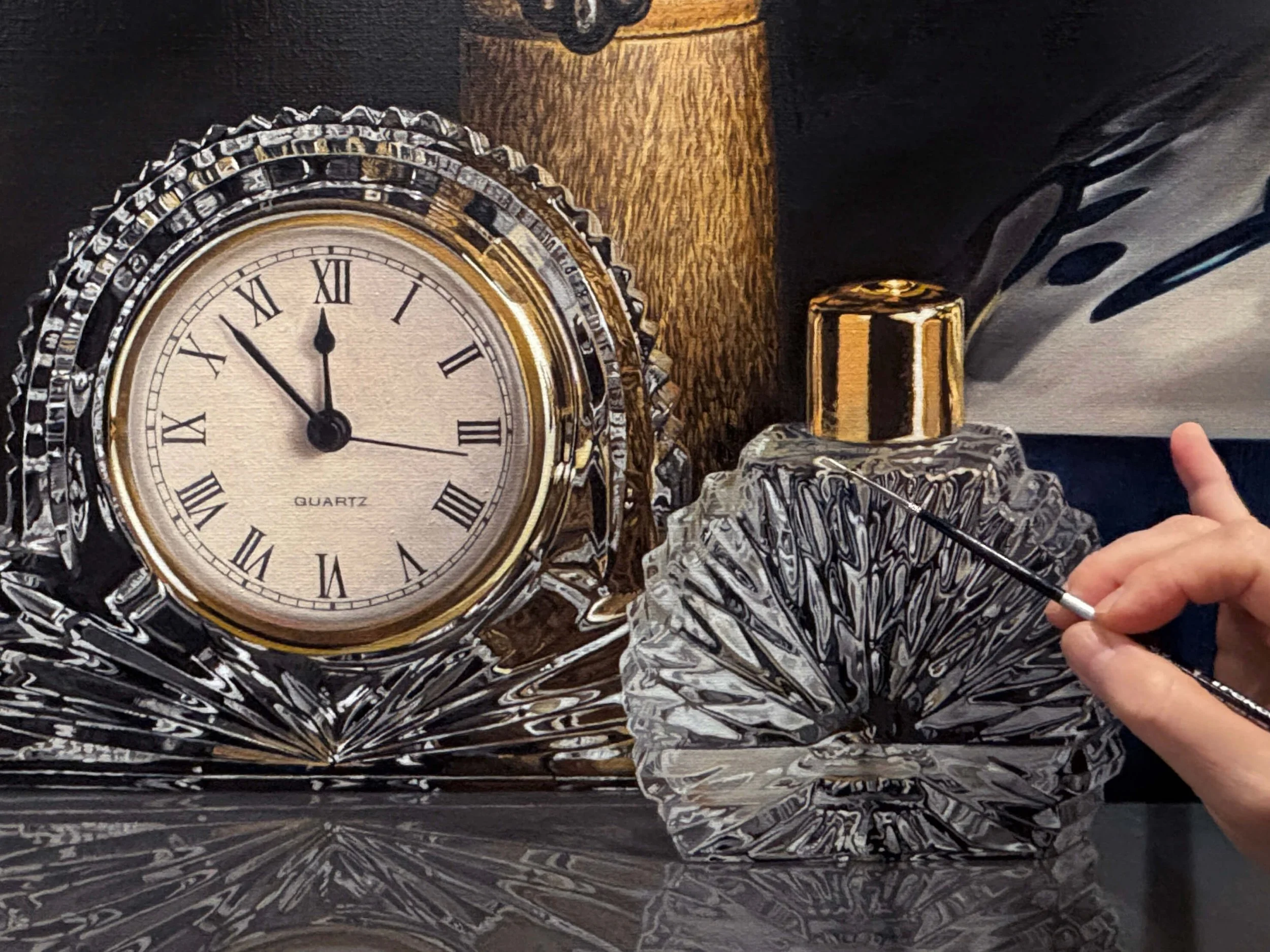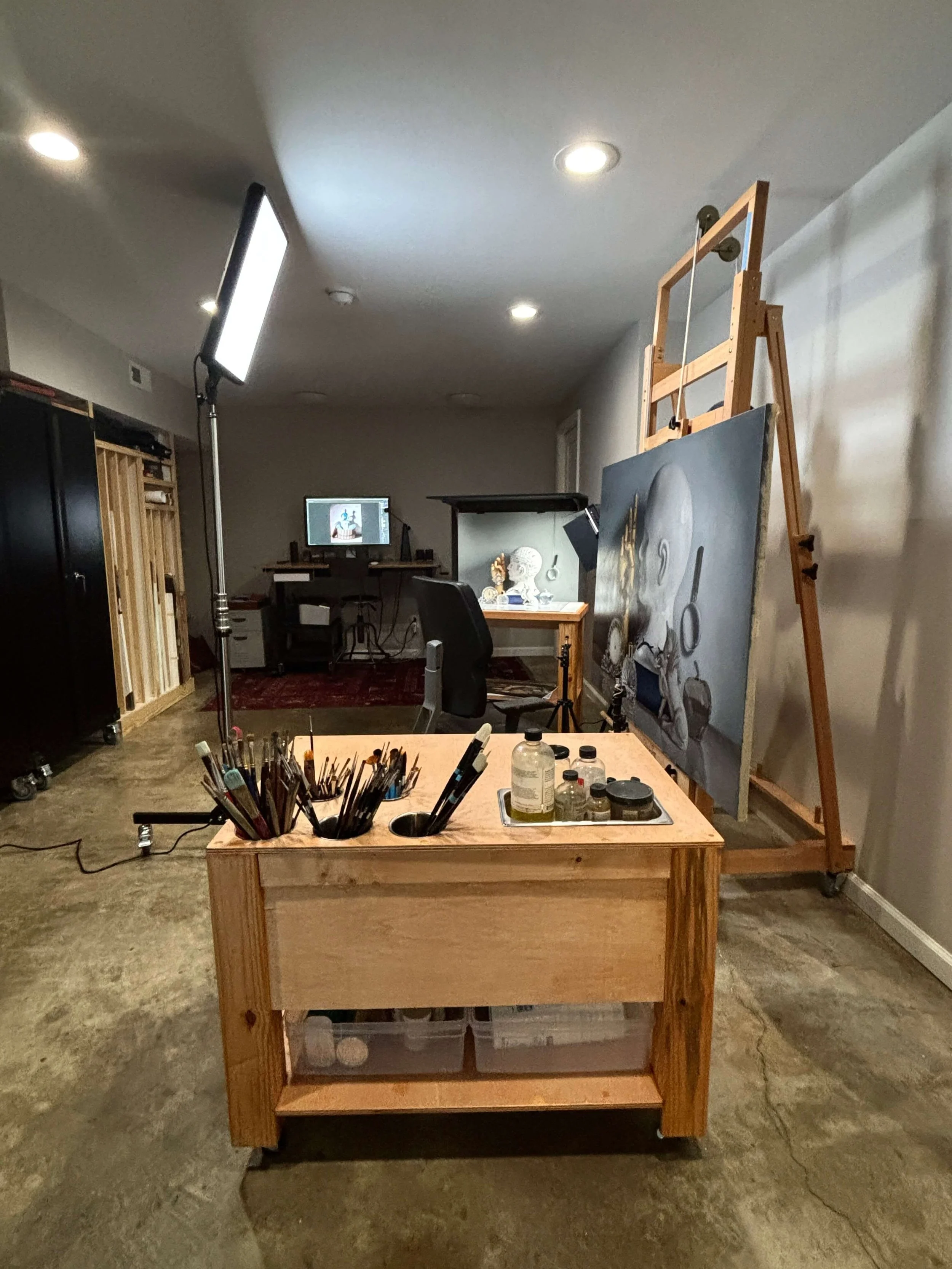Finding Her Own Voice: Sharon Harms' Journey from Design to Painting
Sharon Harms began pursuing painting professionally in 2020 after retiring from a 47-year career as an award-winning graphic designer and art director. Her work is heavily influenced by her time working in the advertising business, where she honed her skills as a visual communicator and storyteller.
Although she has taken an introductory college painting class, she is basically a self-taught artist. Her paintings have been selected by juries in national and international competitions and exhibitions including the FiKVA Award for Painters in Belgium, the Museum of Contemporary Art in Nashville, Manifest Gallery in Cincinnati, and the American Women Artists Association.
Sharon's work has also been featured in leading art publications including Artist Magazine, Create!, and Studio Visit Magazine, and is in several private collections. She currently resides in Nashville, Tennessee.
Explore more of Sharon's work at www.sharonharmsart.com
Interview with Sharon Harms
After an incredible 47-year career in design and advertising, what inspired you to begin painting professionally in 2020?
I’d always dreamed of making art driven purely by my own vision. I loved my design career, but after decades of solving problems for clients, I was ready to shed the constraints of deadlines and approvals. Design taught me how to go from idea to a finished piece, yet working exclusively on a computer screen often left me feeling detached from the work. Painting is physical—mixing of color, spreading paint on the canvas, slowly building layers by hand. It's a challenging and exhilarating tactile process that feels real. When COVID shut things down in 2020, it offered me the opportunity to make a clean break and start painting full-time.
How has your background in visual storytelling and communication shaped your approach to painting?
I came up in advertising when the job was to make an emotional connection with the audience and tell brand stories, not just sell a product. I was lucky to work alongside brilliant writers who relied on me to create visuals that completed the message and conveyed what words alone couldn't. It involved laboring over every detail like lighting, content and the exact position of things to carefully craft the story. After so many years honing those design and art direction skills, creating my still life compositions is very intuitive for me. I see my paintings as a way to use objects as visual language to tell stories.
Even as a self-taught painter, your work has received major recognition. What has surprised or challenged you most about stepping into the fine art world?
After being in a collaborative environment with constant feedback, working as a painter felt surprisingly isolating, which stirred up a lot of insecurity. Recognition among such talented fine artists has helped restore the sense of community and belonging I missed after leaving the design and advertising field.
What stories or emotions do you find yourself most drawn to explore in your current work?
My mind is an echo chamber of memories, identity and global currents, so rather than trying to force any particular narratives, I let them reveal themselves. I gather and arrange objects until a composition emerges that speaks to those inner reflections. I know I’m finished setting up a still life when the scene begins to shine a light on the thoughts swirling around in my brain.
You’ve exhibited nationally and internationally in a short amount of time—how has this experience shaped your confidence and direction as an artist?
Seeing my work alongside established artists is both humbling and motivating. As I continue to find my voice as a painter, being invited to quality exhibitions and competitions confirms I'm headed in the right direction.
What does your creative process look like now, and how does it compare to your past work in design?
Whether I’m facing a blank page or a blank canvas, the challenge of pushing through the initial fear is the same. Over the years I’ve learned to just dive in. With design, there is always a brief with product specs, brand guidelines and a marketing plan, which narrows down the possibilities and helps get ideas going. Painting is obviously open ended. So to focus myself, I find a single object with symbolism that sparks my curiosity then intuitively bring in more elements until unexpected relationships and stories emerge.
Once the composition is established, I shift into hyperrealistic painting mode, leaning on the same attention to detail I honed as a designer. In both disciplines, the goal is the same: to tell stories through visual imagery. But now I am my own client.
What advice would you give to someone starting a new creative chapter later in life?
It may seem a little trite but my advice is to embrace the journey. If you've been doing something for a while you are probably good at it, but it didn't happen overnight. You gained your skills one step at a time and each breakthrough felt rewarding. Starting something new later in life is no different. It helps to lean into the unknown, stay curious, and trust the skills and resilience you’ve already built. Take pleasure in exploring fresh ground with all the experience you bring to it.











